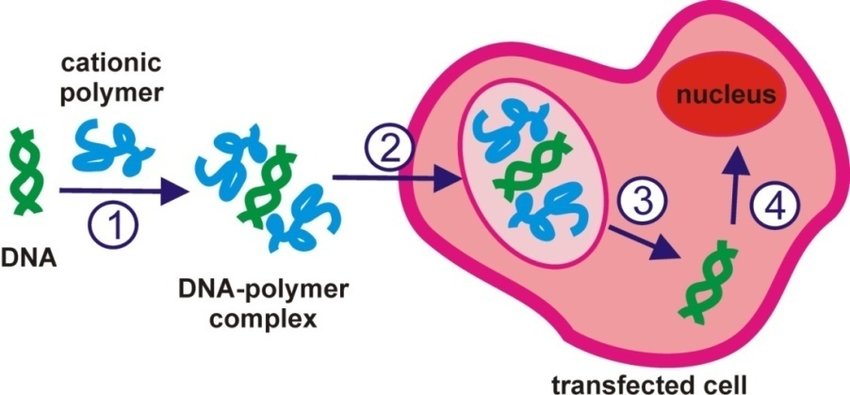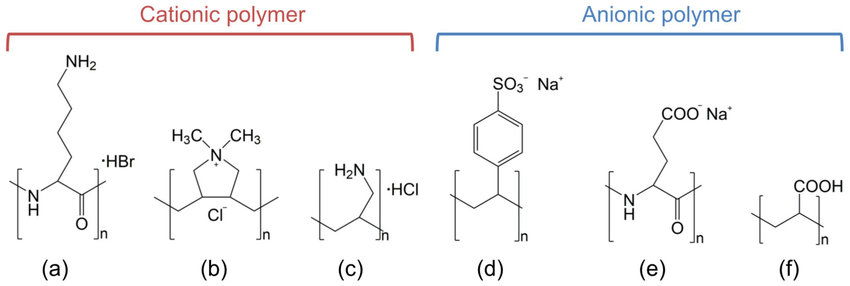Cationic Polymers for Transfection: Methods, Protocols, and Benefits
Cationic polymers are commonly used as non-viral vectors for gene delivery. Their ability to form complexes with nucleic acids and facilitate their entry into cells makes them a valuable tool for various genetic research and applications.
Method of Cationic Polymer-Mediated Transfection
- Polyplex Formation
- Cationic polymers, such as Polyethyleneimine (PEI), carry positive charges that interact with the negatively charged nucleic acids (DNA or RNA), forming compact structures called polyplexes.
- Polyplex Uptake
- These polyplexes interact with the negatively charged cell membranes, allowing them to enter the cells through processes like endocytosis.
- Endosomal Escape
- Once inside the cell, polyplexes may be trapped in endosomes. Cationic polymers help facilitate the escape of polyplexes from the endosome through mechanisms like the "proton sponge" effect, which destabilizes the endosomal membrane.
- Release and Nuclear Translocation
- After endosomal escape, polyplexes are transported to the nucleus, where the nucleic acids can be released and start expressing proteins as required.
Protocol for Cationic Polymer Transfection
- Preparation of Polyplexes:
- Mix the cationic polymer (e.g., PEI) with the desired nucleic acid in an appropriate buffer.
- Incubate for 10–30 minutes to allow polyplex formation.
- Transfection:
- Add the polyplexes to the cells at the desired concentration.
- Incubate for the appropriate period (typically 4–24 hours, depending on cell type).
- After incubation, replace the medium with fresh cell culture medium.
- Post-Transfection:
- Allow for 24–48 hours to pass for gene expression to occur.
- Assess gene expression using methods like PCR or protein analysis.

Benefits of Cationic Polymer Transfection
- Safety: Cationic polymers generally pose fewer risks compared to viral methods, making them safer for use in various applications.
- Versatility: These polymers can be used to deliver a wide range of nucleic acids (DNA, RNA, siRNA) into diverse cell types, including mammalian, bacterial, and plant cells.
- Scalability: The transfection process is simple and can be scaled up for large cell cultures, making it suitable for high-throughput experiments.
- Cost-Effective: Cationic polymers are typically less expensive to produce and use compared to viral vectors, making them an affordable option for researchers.
